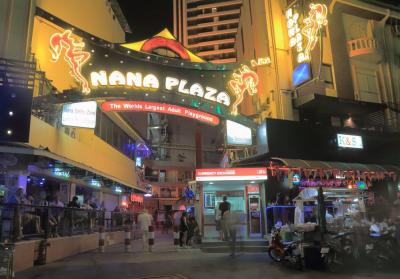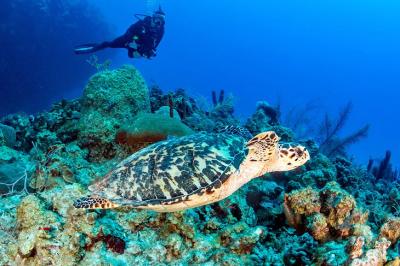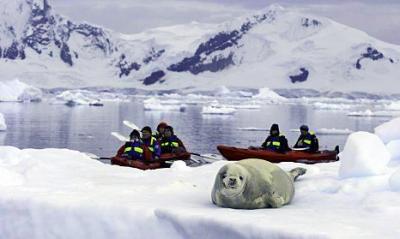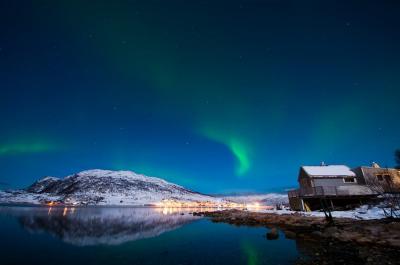Welcome to New Zealand
Adventure Activities in New Zealand
With rugged mountains, expansive terrains and forests in the heart of the country, New Zealand is an outdoor enthusiast’s haven! Travel off-road as you explore the natural beauty of New Zealand’s back country. It’s the perfect way to enjoy the adventure of a four-wheel drive while exploring the magnificent wilderness and the country’s best scenic areas.
The high country in New Zealand is a grid of rough tracks that have been established to allow easy access to mining and timber-milling settlements as well as to farms and scenic areas that were previously inaccessible. However, this combination of rugged and oft neglected roads means that you can only travel these routes with a four-wheel drive vehicle – particularly when the weather is bad. There are also several remote beaches, deep canyons, volcanic terrain and logging tracks to explore in the area.
Compared to these rough terrains, the graveled roads in New Zealand are often referred to as the “best in the world” by rally drivers who can use the constantly changing camber on the hard bedrock to their advantage. Rally is a popular sport since the country possesses land mass equal to that of the United Kingdom and a population of only 4 million people. It’s a great adrenalin sport and one that all visitors should experience whether you drive yourself or decide to go through an organized tour.
Rally New Zealand
The country’s annual world championship event and top international motorsport event is Rally New Zealand, which celebrates its 45th year in 2015. The World Rally Championship was first included in 1977. Since then, it is very famous being awarded the WRC Rally of the Year in 2001.
Birdwatching
Several species of birds call New Zealand home. It’s the ideal location for bird lovers to do some watching as the country boasts a unique birdlife thanks to its relative geographic isolation. Visitors have numerous opportunities to appreciate birds in nature, to join organized tours at local bird sanctuaries or to plan a tailored tour to meet their interests. All bird watching tours in New Zealand are extremely informative with numbers of opportunities to observe the birds in their natural habitat.
New Zealand strives to protect endangered bird species as many previously common birds are now threatened by rats, cats, pigs and humans. Since the flora and fauna on which the birds feed has also been threatened, a number of bird sanctuaries have been established in order to sustain and (hopefully) to increase the country’s bird population. Examples of such sanctuaries include the Mt. Bruce Wildlife Centre and Karori Wildlife Sanctuary.
New Zealand Bird Species
There are numerous bird species found in New Zealand. Among these, the most noticeable include:
-
The Kiwi: New Zealand’s national bird is a nocturnal, one that is endangered and can now only be seen in bird sanctuaries and zoos. The nickname “Kiwis” (referring to people from New Zealand) is taken from this national icon.
-
The Royal Albatross: The world’s royal albatross colony is located in Dunedin. The parents and chicks leave the colony in September when they move to Tairoa Head to court. They lay their eggs in November and these hatch in January. By September, the cycle starts all over again.
-
The Kea: The kea is a naughty and curious parrot that lives in mountains of the South Island. It has a mischievous character and is known for attacking cars in the ski fields. Despite this, the kea is a popular bird with people.
-
The Takahe: This flightless bird was previously thought to be extinct. It is a magnificent alpine bird with green and blue feathers and red beak.
-
The Yellow Eyed Penguin: Also known as the Hoiho, this is one of rarest types of penguins. It is also only found on Stewart Island and the South Island’s southeast coast. This bird lays eggs in September, which, after a 7-week incubation period, hatch around November.
-
The Tui: This bird is an impressive singing bird. Its distinctive white throat feathers and blue-green body are a common sight in the country.
Other Popular New Zealand Birds:
-
Blue Eyed Penguin
-
Kakapo
-
Kaka
-
Kereru: Native Wood Pigeon
-
Kakariki: Native Parakeet
-
Hihi
-
Kokako
-
Bellbird
-
Fantail
-
Blackbird
-
Morepork
-
Saddleback
You can also take short trips or multi-day trips on motor launches and sailing boats. Similarly, it’s possible to charter a private boat with full service and onboard dining facilities. In the following areas, scheduled day cruises are available:
Another popular way to explore the beautiful beaches, lakes and rivers of the country is to go kayaking. Sea kayaking offers a great opportunity to explore the magnificent coastlines while experiencing seals, penguins and other wildlife up close. It’s possible to book a guided sea kayak trip but the ones in Hauraki Gulf and the Bay of Islands on the North Island are particularly popular as are the South Island’s Abel Tasman National Park, Marlborough Sounds and Fiordland.
Cave Formation
The majority of the caves in New Zealand have been formed by marble sediment and limestone. A thick strata, which has been compressed and solidified over millions of years, has been formed from marine life skeletons and mollusc shells that are rich in calcium. This sediment then becomes rock beds.
A mild solution of carbonic acid is slowly released through cracks in the limestone and widens these cracks as rainwater soaks through the soil. These drips also form formations such as stalactites and erode some passages until underground rivers and streams are formed. This creates a hidden world of shafts, sinkholes and caves waiting to be explored. An extensive network of honeycomb caves has also been formed by large deposits of Waitomo limestone.
Diving
New Zealand is also a diver’s paradise with an indented coastline that stretches nearly 18,000 km between three oceans. You’ll experience everything from sub-tropical to sub-antarctic diving with clear waters to view the colourful and mesmerizing sea life. The best time for diving is February to June and you’re never far from a fantastic location for diving.
Popular Diving Spots
Most of New Zealand’s top diving sports are easily accessed and just offshore. The Poor Knights Islands Marine Reserve, with its crystalline waters and range of beautiful tropical fish, is one of New Zealand’s premier dive spots. The late Jacques Cousteau considered this location to be one of the Top 5 Dive Locations in the world. Some other great locations are listed below.
Great North Island Spots:
-
Bay of Islands
-
The South Island offers:
Festivals
There are also a number of festivals, concerts, shows and events that take place annually. These include art deco, fine food and wine, Pacific culture, jazz, etc.
-
The World of Wearable Arts: This annual festival takes place in September and features unique clothing created by designers worldwide. Nelson was originally the host city for the Wearable Arts Awards, but it recently moved to Wellington in response to popular demand.
-
Wine and Food Festivals: Particularly in December to March (summer), this cultural event is hugely popular with foodies looking to explore New Zealand’s cultural events calendar. Of these events, February’s Marlborough Food and Wine is probably the most famous and is attended by people from around the world. The event takes place at the Montana Winery’s Brancott Estate in Blenheim.
-
The Wild foods Festival: This is New Zealand’s quirkiest culinary festival. Every March, the Hokitika Wild Foods Festival offers patrons a chance to experience food that is not regularly featured on restaurant menus. In additional to unusual edible items at this festival, there are also several traditional foods including seafood, whitebait and cervena. The festival is mostly a celebration of the unique foods, hospitality and lifestyle of the west coast with tasty and healthy options presented in a creative way. A popular part of this event is Wildfoods Chef’s Challenge in which three invited chefs use their skills to create a delicious two-course meal, in an hour, using the contents of a mystery box.
-
Queenstown Winter Festival: This 10-day July celebration is considered to be the most legendary winter part of the southern hemisphere. A range of exhilarating activities is offered that guarantees something for everyone.
-
Speights Coast to Coast: The 240km track of this endurance race reaches from the west to the east coast of the South Island. This mammoth competition attracts athletes from around the world as they attempt to conquer the rugged terrain of New Zealand.
Moonlight Fishing
The Maori fishing calendar is one that many Pakeha and Maori swear by when deciding on the best fishing times. According to this calendar, the low tide offers greater feeding activity while full moons are the worst time to fish – especially if the water is particularly phosphorous. Similarly, this calendar states that fish is hungrier during the spring tide and prior to the break of a storm and the peak period during the day – rather than the night. It is the best time to secure a big catch.
Fishing Lodges
There are a number of fantastic sport lodges with choices ranging from remote retreats to wilderness lodges that resemble five-star resorts.
Visitors are permitted to bring their own fishing gear into New Zealand. However, please note that you are not permitted to bring homemade flies into the country. While waders are a standard piece of gear for anglers, they’re hot and clumsy to use in the summers in New Zealand. Most anglers in New Zealand prefer to wear trainers or felt-soled boots with shorts when fishing during the summer. Waders are only necessary on the occasional cold day or at night. However, at Taupo, you’ll need waders in autumn, winter and spring. Similarly, polarized glasses and sunscreen are essential regardless of the season while a hat/cap is needed in summer. Insect repellant is also often necessary in most parts of the country.
Fishing License
Anyone wanting to do freshwater fishing will need a valid license to do so in New Zealand. The license must be bought and signed before you will be allowed to fish. In addition, you are required to carry your fishing permit when fishing or even carrying fishing gear that has been assembled.
Surfing in New Zealand
Waikato Coast’s Raglan is renowned for its left-hand break point having been featured in the endless Summer. However, there are also fantastic waves and breaks to be found at places like The Coromandel, Mount Maunganui, Gisborne, the Wairarapa Cost, Waipu Cove (south of Whangarei) and Kaikoura and Dunedin on the South Island. Kaikoura is also known for its great whale watching opportunities. For details on the best surf locations, ask at the local surf shops.
Water Sports and Wet Adventures
New Zealand is a haven for water sports and wet adventure enthusiasts. Visitors are provided with all the necessary safety gear by the various tourist operators. Similarly, beginners are usually able to take lessons for a variety of sports to cool off in the water:
-
Kayaking
-
River Boarding
-
Sailing
-
Scuba Diving and Snorkelling
-
Surfing
-
White and Black Water Rafting
-
Windsurfing
Walking
New Zealand offers numerous options for trekking/tramping with a range of coastal regions, national parks (30% of the country’s land), reserves and volcanic areas. It’s a great opportunity to get up close with nature. Even in cities, it’s possible to do short walks almost anywhere in the country; however, multi-day treks are more common in the country’s remote highlands.
There are also options for overnight walks with accommodation choices ranging from roughing it to tents or one of over a thousand communal huts. Alternatively, you can do a guided walk in which all meals and accommodation are included. The communal huts offer bunks, water and minimal cooking facilities with 4-5 hours of walking between huts. 350 huts are free while the others charge NZ$4 to NZ$14 per night. Access to few treks is limited by the weather in winter and most treks can be done throughout the year.







